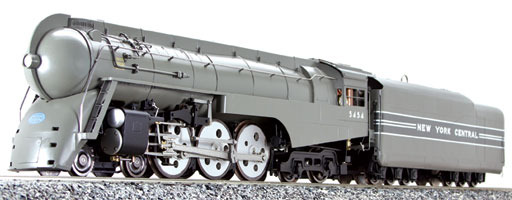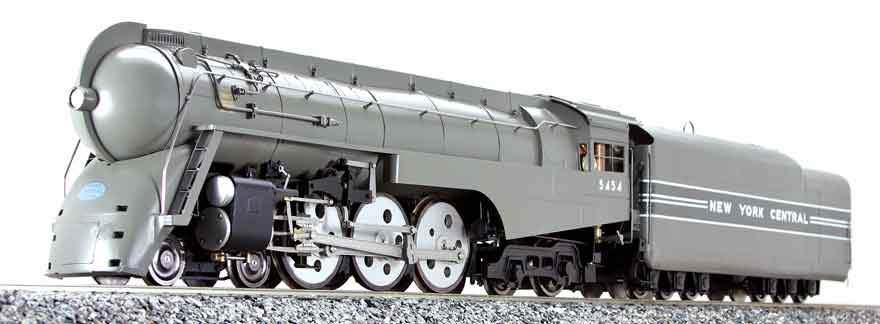 G751-01
NYC 4-6-4 Dreyfuss Hudson #5454
Live Steam
|
The New York Central ‘Hudsons’ were some of the most iconic east coast locos produced in the 20th Century and their loss has been widely mourned since the last example was scrapped. The ‘Hudson’ 4-6-4 evolved from the Pacific wheel arrangement, the additional trailing wheel set giving room for a bigger firebox and the fitting of a booster to the rear truck to improve the starting of heavy trains. Although locos of the 4-6-4 wheel arrangement already existed (being known as a Baltic in Europe), the NYC examples came to be known as ‘Hudsons’ following a conversation between the NYC’s motive power superintendent, Paul Keifer, and the railroad’s president, Pat Crowley.
In all the New York Central ‘Hudsons’ numbered 275, built in Classes J-1 and J-2 from the late 1920’s and J-3 during the late ‘30s. Streamlined variants of each class duly appeared and the last ten J-3a’s, including our #5445, carried bodywork created by industrial designer Henry Dreyfuss. In 1938 Dreyfuss was commissioned by the railroad to design streamlined train
sets in Art Deco style, with the locomotives and passenger cars painted in blues and grays. The streamliners made their initial runs in June, 1938 and were probably the most famous American passenger trains of all time, the ‘Empire State Express’ (New York - Buffalo) and the ‘20th Century Limited’ (New York - Chicago). The NYC made full use of the design’s
radical looks in its publicity and many posters from that era feature the J-3a’s; a member of the class also represented the NYC at the 1939 World’s Fair alongside streamlined engines from the Pennsylvania RR and the LMSR in Great Britain. The Achilles’ heel of the class was a lack of sure-footedness and they were gradually supplanted by NYC ‘Mowhawk’ 2-8-4’s and finally the ‘Niagara’ 4-8-4’s on the heaviest trains. Ultimately the New York Central
dieselized in the 1950’s and all the ‘Hudson’s’ had been withdrawn by 1956, none being preserved.




